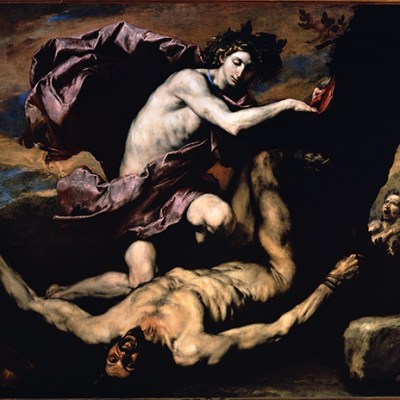The United States Institute of Museum and Library Services tries valiantly to count how many museums there are across the country. Originally it came up with a ‘working estimate’ of 17,500. Then, having done some careful counting in 2014, it dramatically revised the number to 35,144. These it divided into nine categories – from science and technology (1.1 per cent) and history (7.5 per cent) to ‘general museums’ (31.1 per cent) and the capacious bag of historical societies, houses and sites (48 per cent). Just 4 per cent are in the category of pure art museums, and that’s still 1,406. As broad-minded Apollo readers find all kinds of art in most museums – well, perhaps not in the zoos – my selection for 2018 turns the spotlight on five shows on the US East Coast, which blockbuster exhibitions might otherwise leave in the shadows.
‘Inventur—Art in Germany, 1943–55’ at Harvard Art Museums (9 February–3 June), is a no-frills, tough exhibition. Its title is taken from a Günter Eich poem written in 1945, the word ‘inventur’ meaning inventory or stocktaking, both physical and moral. The show looks at the art Germans living in Germany were creating when they had to face up to the atrocities of the Holocaust, defeat in the Second World War, and the start of the Cold War. Almost 50 artists are represented, and although some of the 170 works on display come from museums’s own remarkable Busch-Reisinger and Fogg collections, many are travelling outside Germany for the first time, including Hans Uhlmann’s steel Male Head (1942) from the Lehmbruck Museum.
Männlicher Kopf/Male Head (1942), Hans Uhlmann. Lehmbruck Museum, Duisburg © 2017 Artists Rights Society (ARS), New York/VG Bild-Kunst, Bonn. Photo: Jürgen Diemer.

An hour away by train or car, the under-visited Worcester Art Museum’s rich permanent collection includes an early Italian panel painting, Miracle of San Donato, on which scholars have done much research. It just might be by Leonardo da Vinci. ‘The Mystery of the Worcester’s Leonardo’ (10 March–3 June) displays this painting with the Louvre’s Annunciation for the first time since they were separated from their original altarpiece, backing up the museum’s theory of attribution with a summary of its research findings.
Moving into the state of New York, Corning Museum of Glass, probably the finest of its kind and always worth a visit, has devised an imaginative way to commemorate the 150th anniversary of the canal journey that brought glassmaking from Brooklyn to Corning in 1868. In May, it launches its GlassBarge in Brooklyn to take a four-month-long journey along the Erie Canal to Buffalo, with on-board demonstrations in glass-blowing (concluding on 22 September 2018). Down in the great, dazzling port-city of New York (which has 83–100 museums depending on who’s counting), visitors to the vast Metropolitan Museum of Art at Fifth Avenue might happily put on blinkers and head upstairs to soak up the intricate beauty of five Vajracarya priests’ crowns, dating from the 13th to 18th centuries. ‘Crowns of the Vajra Masters: Ritual Art of Nepal’ (until 16 December 2018) tells of a unique tradition in Nepalese Buddhism, which has ritual at its heart. The show explores the crowns’ devotional use, iconography, stylistic evolution, and how they preserve the memory of early Indian Buddhist practices – such as those depicted at Ajanta in India – that would otherwise would be lost to us.
Vajracharya Priest’s Crown (13th–early 14th century). The Metropolitan Museum of Art

And so to the capital, Washington D.C., and its museum-lined National Mall. Here, the Hirshhorn Museum and Sculpture Garden continues to soar as it has done since Melissa Chiu arrived as director in 2014. This coming year, ‘Brand New: Art and Commodity in the 1980s’ (14 February–13 May) looks at a pivotal moment in New York’s cultural history, focusing on some 50 East Village artists and how they created new relations between artwork and artist, between object and brand – a remarkable assembly of works by Vito Acconci, Ashley Bickerton, Barbara Bloom, Jessica Diamond, General Idea, Felix González-Torres, Peter Halley, Jeff Koons, Donald Moffett, Joel Otterson, Richard Prince, Pruitt-Early, Cindy Sherman, Meyer Vaisman, Julia Wachtel and others.
Louise Nicholson is a freelance arts writer and Apollo contributor.
Keep up with Apollo’s 12 Days selection of art highlights here.


